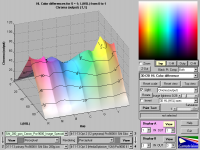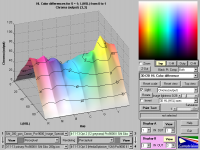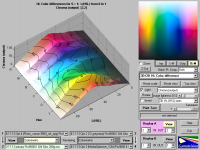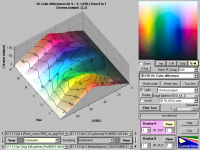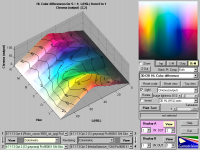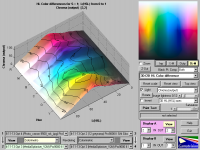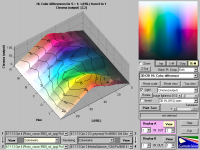- Joined
- Feb 24, 2005
- Messages
- 1,669
- Reaction score
- 183
- Points
- 223
- Location
- North of Boston, USA
- Printer Model
- Canon i9900 (plus 5 spares)
That’s the same link that I included and quoted in post #8.I came across this description of soft proofing in a luminous-landscape.com article.
Soft Proofing
Soft proofing is simply a mechanism that allows you to view on your computer monitor what your print will look like when it is on paper. A specific paper. That paper and ink combination has been defined by the profile that you or someone else has made for your printer / paper and ink combination. When a printer profile is made the colour of the paper is one of the factors that is figured into the profile, because the spectrophotometer is reading the combination of the ink, and the paper that lies beneath it.
So, if you were able to view your image through the printer profile, you would be able to see how that particular combination of ink and paper would reproduce it, taking into account the gamut as well as other characteristics of the inks used.
In your last para, I think we are talking of slightly different things. Softproofing is applied to the profiles as well as images, the purpose being to detect the differences between the BtoA and AtoB tags, which should ideally be perfect inverses, if the softproofing of images is to be accurate. See the Gamutvision ref. in post #7
I have to admit that I did not look at the Gamutvision reference in post #7 before typing my reply, and I now I understand where my disagreement came from. I reread all of the posts in this thread, and they don’t mention the “Gamutvision” package (which I had never heard of). I just assumed that you were doing this “round trip” using a trick that you found someplace in Photoshop or some other package.
The Gamutvision “round trip” is basically the same procedure as described in the link Evaluating an output profile in my post #6, and is not the same as sending an image through the transform in both directions as is done when you soft-proof an image. A few notes:
1. It isn’t stated, but Gamutvision obviously (from the DE plots that both you and they show) creates a set of R/G/B color values that covers the full range of colors (0 to 255 for each of R/G/B). In any case, to test the transformation from the LUTs, it is necessary to run many, many sets of color data through the transform, whether it be from an image or a table of all possible colors.
2. Remove all out-of-gamut colors from the data set, something that isn’t done when soft-proofing.
3. “Round trip tests are normally done with relative colorimetric intent, but perceptual rendering intent is also of interest.” The “Gamut Mapping” diagrams on this link, (written by the man who wrote Gamutvision) shows that a colorimetric rendering intent passes all color values inside the gamut straight through. There won’t be any out-of-gamut colors (which would normally be clipped at the edge of the gamut) at this point, since they were removed earlier.
4. By running the BtoA transform then the AtoB transform on an in-gamut data set using transforms that pass the colors straight through in the in-gamut areas, the resulting data set should match the original. The Colorimetric map in the link says that this rendering intent isn’t reversible, but I believe that this is true only if there are any out-of-gamut colors in the data set.
In summary, I now understand what you are doing. Sorry for the diversion and wasting so much of your time.

